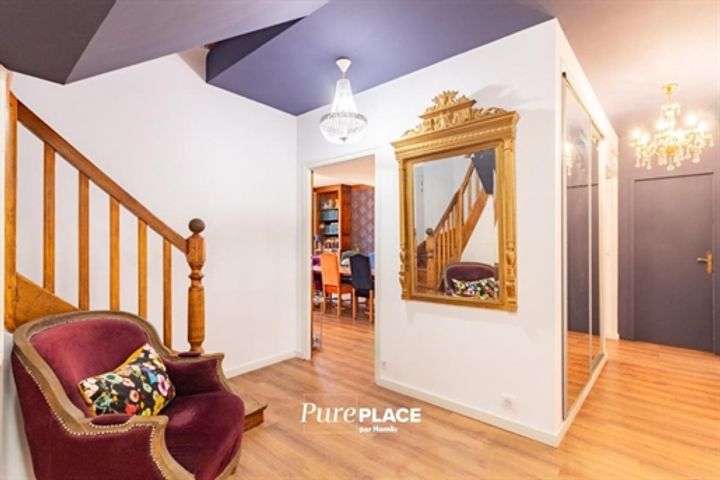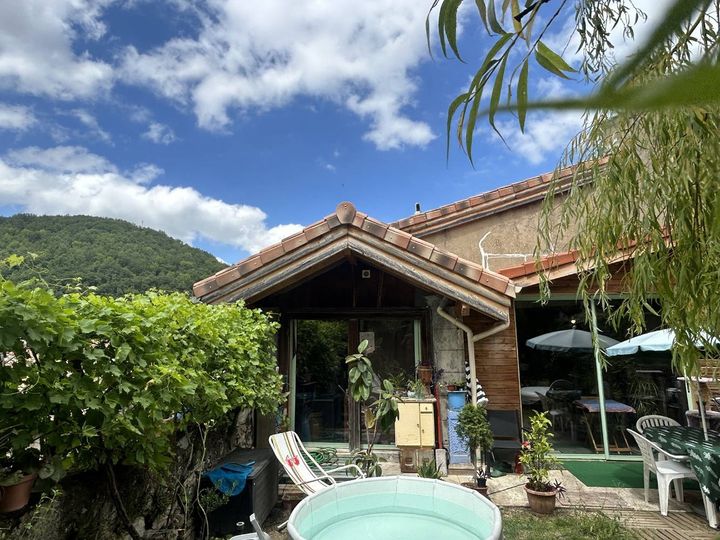Average real estate prices in Lavelanet, a small town in the Ariège department of France, vary depending on location and property type. As of 2023, the price per square meter for apartments typically ranges from €1,200 to €1,600, while houses can be found for about €1,100 to €1,500 per square meter, depending on their condition and amenities. For instance, a two-bedroom apartment in the town center might list for around €80,000, whereas a three-bedroom house with a garden on the outskirts could be priced at approximately €150,000. Additionally, older properties may offer lower prices, often attracting buyers looking for renovation projects, with some listings falling below €100,000.
Lavelanet
Location
Price Range
Any price
Price Range
Minimum
No min
Maximum
No max
Property type
Show all
Property type
Show all
House
Apartment
Building
Other
Bedrooms
Any beds
Bedrooms
Minimum
No min
Maximum
No max
Surface Range
Any surface
Surface Range
Minimum
No min
Maximum
No max
Sale type
For sale
Sale type
Show all
To rent
For sale
Location
Apartments and houses for sale in Lavelanet
3 results
Recent
Lavelanet insights
| Aspect | Summary |
|---|---|
| Population | Approx. 2,500 residents |
| Average Property Price | €100,000 - €130,000 |
| Rental Yield | 5% - 7% |
| Average Rent | €500 - €700/month |
| Occupancy Rate | 85% - 90% |
| Capital Growth Rate | 2% - 4% per annum |
| Property Tax | Approximately 1.5% of property value |
| Transaction Costs | 7% - 10% of property price |
| Expected ROI | Around 8% - 10% annually |
| Economic Growth Impact | Moderate growth; tourism and local industries |
Lavelanet FAQ
What are the average real estate prices in Lavelanet?
How have real estate prices in Lavelanet changed over the past few years?
Real estate prices in Lavelanet have fluctuated notably over the past few years, reflecting broader economic trends and local developments. In 2020, the average property price was around €1,200 per square meter, but by 2023, that figure has seen a rise to approximately €1,500 per square meter, indicating a 25% increase. This shift has been influenced by a combination of factors, including an influx of remote workers seeking tranquil living environments amidst the COVID-19 pandemic and ongoing interest in the region for affordable second homes. For instance, charming stone cottages that were once priced around €80,000 have jumped to a range of €100,000 to €120,000. Meanwhile, larger homes with more amenity space have also seen significant appreciation, with listings for family-sized houses now commonly advertised at €250,000 or more. The increasing prices have made Lavelanet a more competitive market, though it still remains relatively affordable compared to larger urban centers in France.
What factors influence real estate prices in Lavelanet?
Real estate prices in Lavelanet are influenced by several key factors, including location, local amenities, and historical significance. The town's proximity to the picturesque Pyrenees mountains appeals to outdoor enthusiasts, which can drive up demand for properties. Additionally, the presence of essential services such as schools, healthcare facilities, and shops creates a more attractive living environment, further impacting prices. The historical architecture and charm of Lavelanet also contribute to its appeal, as buyers often seek homes that reflect the town's cultural heritage. Moreover, the economic climate, including job opportunities in surrounding areas, plays a crucial role in shaping the real estate market. For instance, homes near popular tourist attractions or regional parks may command higher prices due to their desirability for seasonal visitors.
Are there specific neighborhoods in Lavelanet with higher property values?
In Lavelanet, neighborhoods such as the historic center tend to have higher property values, largely due to their proximity to local amenities, cultural sites, and the picturesque Montségur castle nearby. Properties in the Rue de la République and Rue des Écoles are particularly sought after, as they offer charming architecture and easy access to cafés and shops. Additionally, areas with scenic views of the surrounding Pyrenees foothills, like those near Rue du 14 Juillet, attract buyers looking for tranquility and natural beauty, which can drive up property prices. The market dynamics in these neighborhoods reflect a mix of both local demand and the appeal of Lavelanet's rich history and community environment.
How do Lavelanet's real estate prices compare to nearby towns?
Lavelanet's real estate prices tend to be more affordable compared to nearby towns like Mirepoix and Foix. While the average price per square meter in Mirepoix can reach around €1,900, Lavelanet's prices hover closer to €1,400, making it an attractive alternative for buyers seeking value. In Foix, which benefits from its status as a sub-prefecture, properties can command prices as high as €2,100 per square meter. Additionally, Lavelanet offers a range of properties, including charming stone houses and more modern homes, often priced lower than those in its neighbors. The town's appeal is further heightened by its proximity to natural attractions, which can affect real estate demand and pricing dynamics in the region.
What type of properties are typically more expensive in Lavelanet?
In Lavelanet, properties with historical significance and unique architectural features tend to be more expensive. For instance, old stone houses that have been well-preserved or renovated often command higher prices due to their character and charm. Additionally, properties that offer expansive gardens or proximity to natural parks and scenic views of the surrounding Pyrenees attract premium buyers. Larger family homes in more sought-after neighborhoods with amenities like updated kitchens and modern bathrooms also fall into the higher price range. Furthermore, properties near the town center that provide easy access to local shops, restaurants, and schools can also see an increase in value.
Is it a good time to invest in real estate in Lavelanet?
Investing in real estate in Lavelanet may present a mixed picture depending on various factors. As a small commune in the Occitanie region, Lavelanet has historically offered more affordable property prices compared to larger cities. The local real estate market has seen a gradual increase in interest, particularly among those seeking a quieter lifestyle amidst the stunning backdrop of the Pyrenees. Properties such as traditional stone houses and charming cottages can be found relatively cheaply, enticing first-time buyers or investors looking for holiday homes. However, the town's economy relies heavily on tourism and local industries, which can fluctuate based on seasonal variations. Additionally, infrastructure developments or changes in local policies could impact property values in the medium to long term. Understanding the local market dynamics, including demand for rental properties or future development plans, will be crucial for anyone considering an investment in this area.




